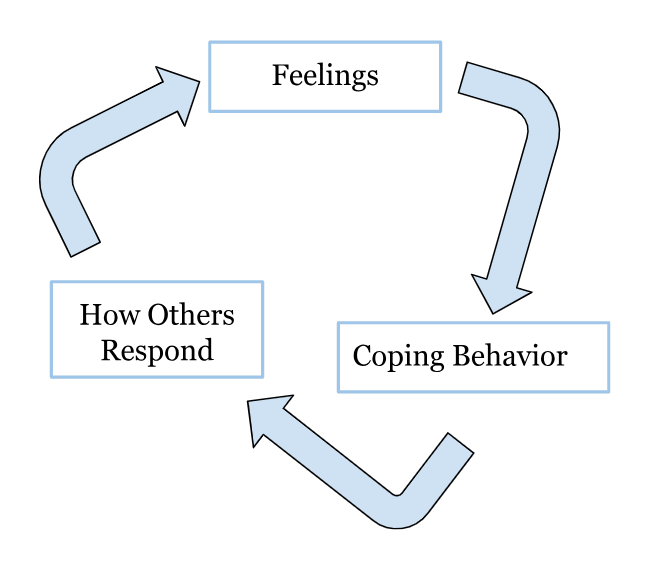Male Depression Takes 1-5 Years to Recover, Research Says
How long does it take for men to recover from depression?
If you’re close to someone you care about deeply and suspect he might be dealing with depression, it can be really challenging to know how to reach out to him. You might feel disconnected from what he’s experiencing and find yourself caught in a daily struggle about how to ask the right questions or even if it’s okay to bring it up. Each day can feel heavy with unspoken worries, making your interactions feel strained and loaded with unexpressed emotions. You can’t help but wonder about his well-being, what’s going on inside his head, and how you can be there for him without overstepping. It’s tough to navigate those feelings while wanting to be a source of support and understanding. You may wonder,
- How long does male depression last?
- If he got help, how long does male depression take to heal?
- Is this a passing phase? Will it get better on its own?
- Is it worth it to get help for male depression?
We’ll answer all your questions about treating male depression in this article. You’ll know how to approach it and what he needs in order to recover.
70-90% of Men Achieve Recovery from Depression with Proper Treatment
Research indicates that with tailored therapeutic interventions such as EMDR, somatic therapy, or psychodynamic approaches, 70-90% of men with depression can experience significant symptom reduction or full recovery, characterized by improved mood stability, reduced symptoms, and enhanced daily functioning. Without intervention, recovery rates fall to 20-40%, often resulting in chronic issues or complications like substance misuse or heightened suicide risk. Early identification and therapies attuned to male experiences, including addressing stigma, markedly improve outcomes, converting concealed suffering into a journey of renewed vitality and relationships.
Depression Inflicts Deep Trauma-Like Pain on Men and Their Loved Ones
Depression in men undermines their fundamental identity, transforming routine duties like work or family life into daunting ordeals rife with shame, detachment, and despair. This inner turmoil is a large part of their struggle, intensified by cultural norms of resilience, contributing to associated problems like irritability, anxiety, or avoidance behaviors. The cascading impact burdens close relationships, stirring bewilderment and powerlessness, yet framing this distress as trauma paves the way for compassionate, specialized recovery methods.
Male Depression Arises from Genetic, Environmental, and Contextual Factors
Depression in men develops through an intricate blend of genetic susceptibilities, environmental strains, and contextual pressures, particularly in phases where roles and self-perception are tested.
Genetic Factors
Genetically, evidence points to an inheritable element, with familial backgrounds heightening risk via traits like neurochemical disparities or sensitivities to stress and mood fluctuations—genetics might explain 40-50% of depression vulnerability in men. Men could inherit propensities that, once activated, result in enduring low spirits. One individual recounted, “This is exactly what my parent put me through, and at 18 I was diagnosed with bipolar disorder, genetic from family, and that only compounded my already fragile system from the years of trauma and abuse.” Another highlighted perceived inheritances: “Both of my parents are obese so I grew up thinking I was going to become fat no matter what… that changed my perspective, actually sparked an eating disorder,” demonstrating how genetic views can spillover into mental health challenges.
But just because depression is genetic doesn’t mean it can’t be changed or healed. 40-50% of variability means that of any person’s depression, 40-50% of it is based on a genetic set-point. This means 50-60% of a highly genetically depressed person (endogenously depressed person) is able to change. That’s good news if you or your loved one has a family history of depression.
Environmental Factors
Environmentally, cultural demands, including media-promoted success standards, job-related tension, social seclusion, and norms stifling emotional openness, increase susceptibility, frequently amplifying genetic dangers to spark depressive periods. Men commonly identify stressors like unemployment or societal pressure as initiators.
Additionally, males experience more social isolation that women, leading to worse mental health outcomes. Men have fewer close friends than women, and additionally, they have fewer close friends than they did 20 years ago. Social circles serve as a support against depression, and when our social relationships are weakened, we become more vulnerable to depression.
Contextual Factors
Contextually, family interactions are vital: disputes such as ineffective dialogue or elevated expectations can cultivate inadequacy; control struggles, where men navigate independence amid disorder; and interruptions like abrupt losses (e.g., bereavement, separation, or trauma) correlate with emergence, as unprocessed sorrow may drive depression as an ineffective coping tactic.
Common Signs of Depression in Men Often Masked as Other Behaviors
Depression in men frequently presents through externalized or concealed symptoms rather than overt sadness, complicating recognition—research shows men are more prone to irritability, anger, withdrawal, and dissociation, often misattributed to personality or stress. These manifestations stem from societal expectations of stoicism, leading to underdiagnosis—studies indicate 30-40% of depressed individuals exhibit short tempers, with men showing higher rates of anger attacks, substance issues, and risk-taking. Dissociation appears as emotional numbness or detachment, tied to chronic fight-or-flight states. The table below outlines key signs with descriptions and supporting research:
| Sign | Description | Research Support |
|---|---|---|
| Anger and Irritability | Quick frustration, outbursts, or agitation over minor issues, often masking underlying hopelessness. | 30-40% of depressed individuals show short tempers; higher in men with anger attacks or aggression. |
| Withdrawal | Becoming detached, negative, or socially isolated, avoiding interactions or responsibilities. | Linked to restlessness, on-edge feelings, and relational strain in depressed men. |
| Dissociation | Feeling disconnected from thoughts, emotions, or reality, like numbness or being “on autopilot.” | Associated with chronic stress responses, brain fog, and emotional disconnection in depression. |
| Fatigue and Sleep Issues | Persistent tiredness, insomnia, or oversleeping, reducing engagement in activities. | Common in male depression, often with loss of pleasure in hobbies. |
| Risk-Taking or Substance Use | Increased alcohol/drug use, reckless behaviors as coping mechanisms. | Higher rates in men, tied to unnecessary risks and anger. |
Therapy Halves Depression Recovery Timeline for Men
Complete recovery from male depression may extend 5-10 years absent support, yet therapies like EMDR, somatic, or psychodynamic can condense this to 6 months-5 years, with response rates reaching 70-90% when appropriately matched. This summary emphasizes effective routes to hasten recovery, stressing the value of prompt, stigma-sensitive care, with medication considered only if clinically warranted.
Key Factors Shape Male Depression Healing Timelines
Recovery durations for male depression fluctuate depending on aspects like symptom longevity (briefer episodes heal swifter), age (younger men potentially respond faster), accompanying conditions such as anxiety or substance concerns, interpersonal backing, drive, and availability of male-oriented therapies. Swift therapeutic engagement targeting catalysts like seclusion or trauma additionally tailors and hastens the route to health.
Male Depression Healing Progresses Through Five Essential Stages
Healing from male depression evolves via interconnected stages, derived from proven frameworks:
- Denial and Onset (Days to Months) – Preliminary dismissal of indicators, frequently disguised as irritability or retreat.
- Anger and Progression (1-6 Months) – Escalating frustration, appearing as outward actions like hostility amid intensifying seclusion.
- Bargaining and Crisis (3-12 Months) – Efforts to barter with the state, such as overexertion for relief, culminating in possible crises.
- Depression and Treatment (6 Months-2 Years) – Primary symptoms prevail; therapy centers on oversight and capability enhancement to avert recurrence.
- Acceptance and Integration (1-5+ Years) – Adopting equilibrium, diminishing depression’s hold, enabling revitalized involvement with sporadic aid.
Treatment Boosts Recovery Rates and Speeds Healing Compared to No Intervention
Fortitude assists every path, yet organized therapy vastly exceeds unmanaged routes, elevating recovery from 20-40% to 70-90% and truncating durations from 5-10+ years to 6 months-5 years for numerous men. The table beneath juxtaposes essential facets:
| Aspect | With Treatment (e.g., EMDR, Somatic, Psychodynamic) | Without Treatment |
|---|---|---|
| Recovery Rate | 70-90% significant improvement | 20-40% spontaneous recovery |
| Timeline | 6 months-5 years for many, up to 10 for full | 5-10+ years, often chronic |
| Relapse Risk | Lower (20-50%, mitigated by ongoing care) | Higher (up to 60% chronic) |
| Mortality/Complications | Reduced with early help | Elevated, including higher suicide risk |
| Quality of Life | Enhanced mood, relationships, functioning | Persistent isolation, anxiety |
This accentuates therapy’s crucial function in attaining swifter, more thorough recuperation.
The Treatment Pathway Accelerates Healing from Male Depression
Methods like EMDR, somatic therapy, or psychodynamic yield 70-80% improvement within months to years for initial alleviation, progressing to 1-3 years for lasting remission through customized assistance tackling male-unique hurdles. Therapy confronts both manifestations and origins, encompassing genetics, environmental burdens, or contextual wounds, via gradual evolution; medication may be integrated if deemed necessary by a professional.
Beginning Stages: Building Safety and Stability (First 1-3 Months)
Preliminary therapy prioritizes crisis steadiness and emotional safeguarding, frequently commencing with somatic methods to reestablish bodily awareness while evaluating origins like genetic susceptibilities or cultural strains. Men might hesitate, sensing vulnerability, yet sessions cultivate a bias-free arena to articulate repressed fury or disgrace—for example, pinpointing coexisting conditions and weaving in grounding exercises to reconstruct regimen, establishing bedrock for profound inquiry.
Middle Stages: Unpacking and Rebuilding (3-12 Months)
Upon steadiness, emphasis pivots to dissecting fundamental elements through psychodynamic exploration, contesting warped perceptions from psychological foundations like diminished value or environmental detachment via reflection and relational labor. Should contextual catalysts like familial bereavement or occupational trauma have ignited it, meetings incorporate EMDR for grief reprocessing alongside family engagement to bolster dialogue and navigate sorrow. Benchmarks encompass lessened irritability and modest triumphs like social reconnection, amongst relapses, nurturing endurance and sounder coping past repression.
Later Stages: Integration and Long-Term Growth (1-3+ Years)
Progressive segments solidify advancements and deter reversion by assimilating insights into routine. Men tackle persistent origins, such as genetic inclinations via sustained comorbidity oversight or environmental modifications like workplace limits to battle seclusion. Therapy underscores self-kindness, reimagining fortitude past rigidity, and forging male support circles for autonomy—for instance, assured choices, fortified ties, and aspiration pursuit—with intermittent consultations assuring perpetual liberation. This yields metamorphosis, transmuting fragility into empowered existence.
Frequently Asked Questions About Male Depression
What Are the Common Signs of Depression in Men?
Indicators frequently emerge as irritability, anger, fatigue, hobby disinterest, substance utilization, hazard-seeking, or detachment, over explicit sorrow—bodily grievances like cephalalgias or gastrointestinal woes might also indicate it.
How Can Loved Ones Support a Man with Depression?
Foster candid exchange sans coercion, exemplify openness, tenderly propose expert assistance, and partake in pursuits like exertion. Eschew belittling sentiments; prioritize sympathy and evade facilitating seclusion.
What Are the Most Effective Treatments for Male Depression?
EMDR, somatic therapy, and psychodynamic methods stand as primary, frequently merged with lifestyle alterations; male-centric clusters tackle stigma. For acute instances, inpatient or adjunctive modalities may assist, with optimal results from premature, amalgamated strategies; antidepressants if indicated.
Can Male Depression Be Prevented?
Advancing affective literacy, robust communal bonds, tension oversight, and premature psychological assessments can alleviate hazards. Confronting elements like solitude or trauma diminishes occurrence, albeit genetics constrain absolute aversion.
Does Depression in Men Resolve on Its Own?
Infrequently; unmanaged, it commonly endures or deteriorates, amplifying perils. Engagement substantially augments results, altering persistent conflicts into controllable restorations.
Speak With Me and Learn More About Treatment for Depression
Want to better understand what treatment could look like for you—or for a man you care about who may be struggling with depression? You don’t have to navigate this alone. Taking the first step toward support can feel overwhelming, but it’s also the most important move toward healing and relief.
I specialize in helping men work through depression in a safe, supportive, and non-judgmental space. Together, we’ll find an approach that feels right and actually works.
Schedule a free phone consultation with me today—let’s talk about how therapy can help you or your loved one move forward.

John Allan Whitacre, AMFT provides therapy for men with depression in Pasadena.












